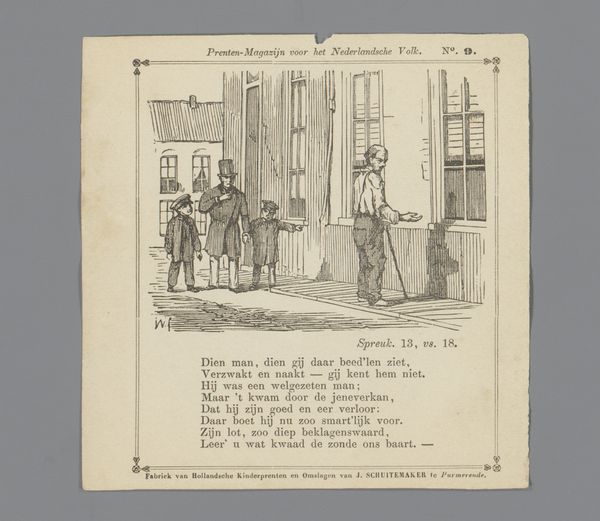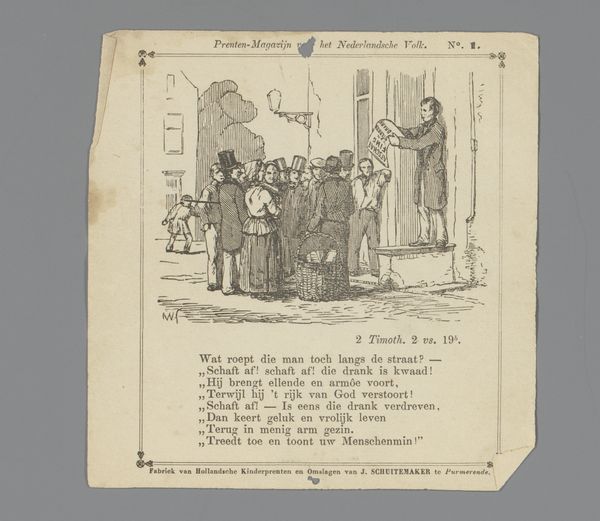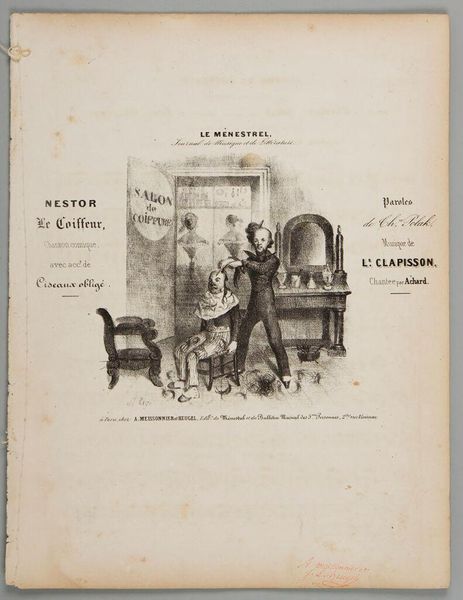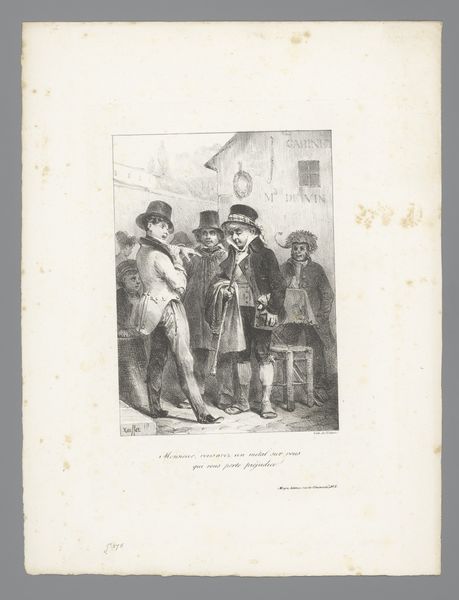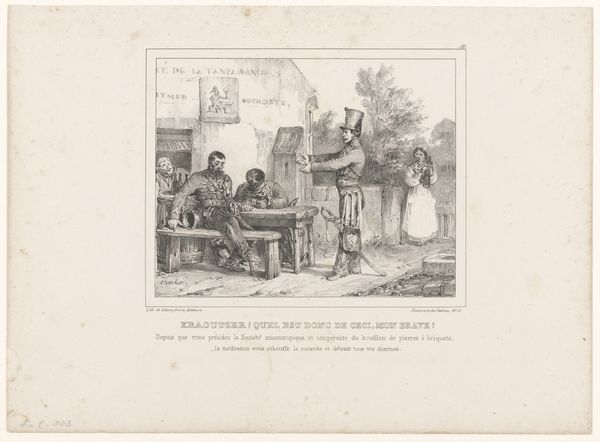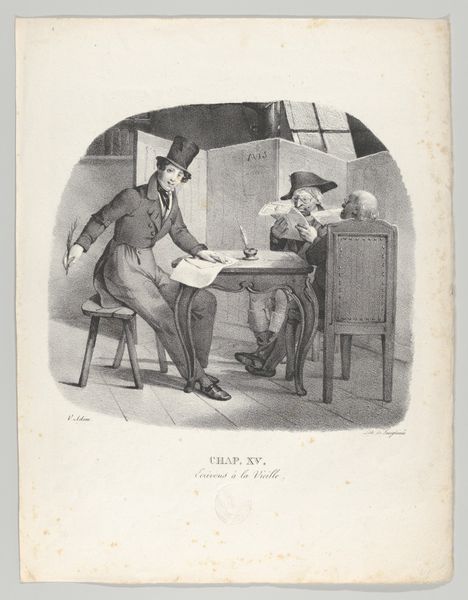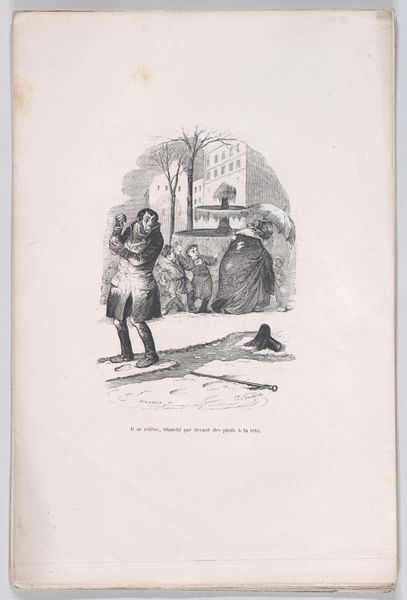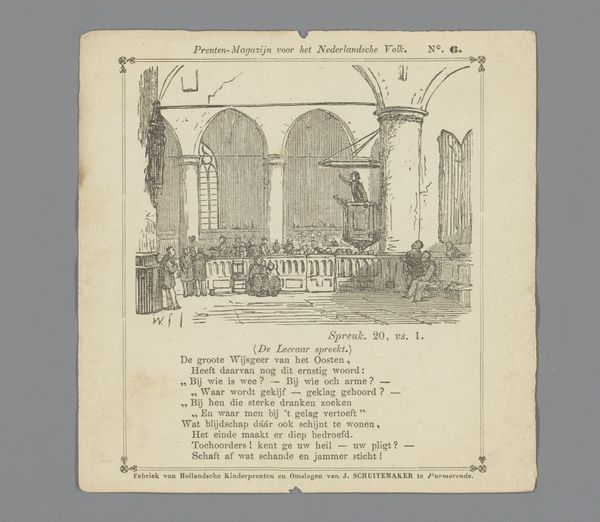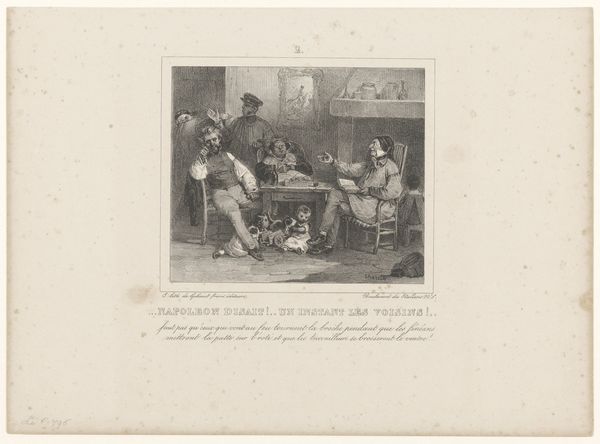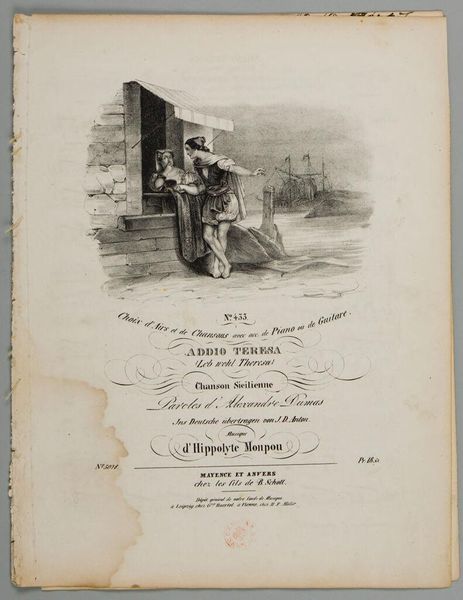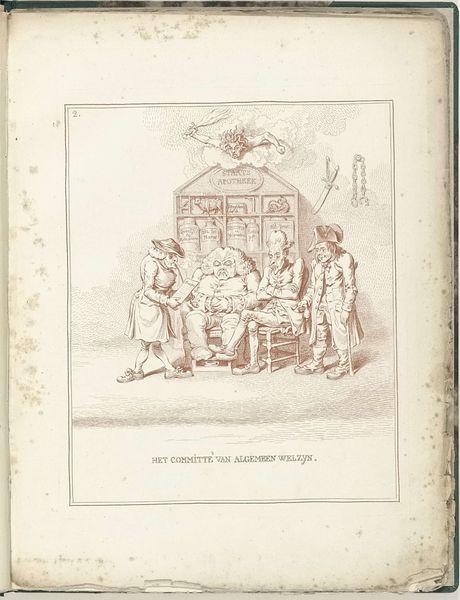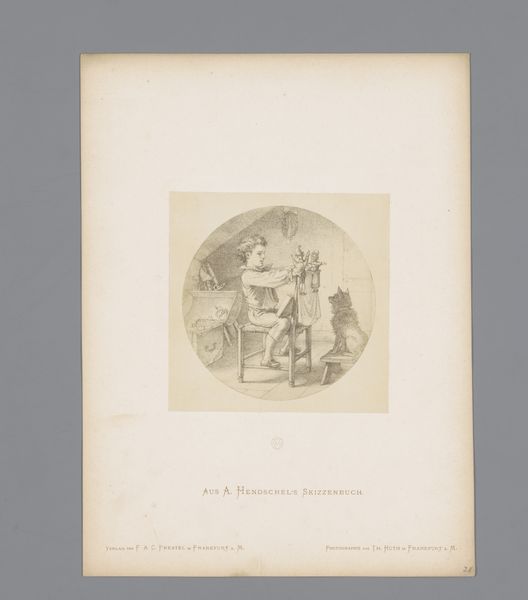
drawing, graphic-art, print, paper, engraving
#
drawing
#
graphic-art
#
narrative-art
# print
#
paper
#
genre-painting
#
history-painting
#
engraving
Dimensions: height 125 mm, width 123 mm
Copyright: Rijks Museum: Open Domain
Editor: This drawing, "Man spreekt twee drinkers bij een uitspanning aan," is attributed to Isaac Weissenbruch and dates from 1838 to 1912. It's an engraving on paper. The scene feels very staged and moralistic. What strikes you about it? Curator: This work immediately brings up questions of production for me. As an engraving intended for "Prenten-Magazijn voor het Nederlandsche Volk," we have to consider it as a commodity aimed at a particular market. How does its materiality - the readily reproducible nature of print - shape its message about these men at leisure? Editor: So you're saying that the *way* it's made is part of the *meaning*? Curator: Precisely. The engraving as a medium inherently democratizes access to imagery. How might the relatively low cost of accessing this print have affected its reception, compared to, say, an oil painting depicting a similar scene? Were working-class families consuming images criticizing working class behaviour, or were such scenes designed more for consumption in wealthier households? And how does that complicate a direct reading of its moralizing narrative? Editor: That's a great point, the method of distribution shapes how the message is understood. I was so focused on the kind of simple cautionary tale it seemed to present. Curator: The text included in the print alludes to ideas found in 1 Corinthians and so may function in both moralizing and instructive ways. Moreover, one could reflect on the kind of labour that was expected from Weissenbruch to satisfy market demands with cheap yet accessible graphic art that could be distributed among "het Nederlandsche Volk". It's a much more complex material history than a first glance reveals. Editor: I never thought about that aspect of it – the print *itself* as a product of labor. I’ll definitely look at art differently now.
Comments
No comments
Be the first to comment and join the conversation on the ultimate creative platform.
